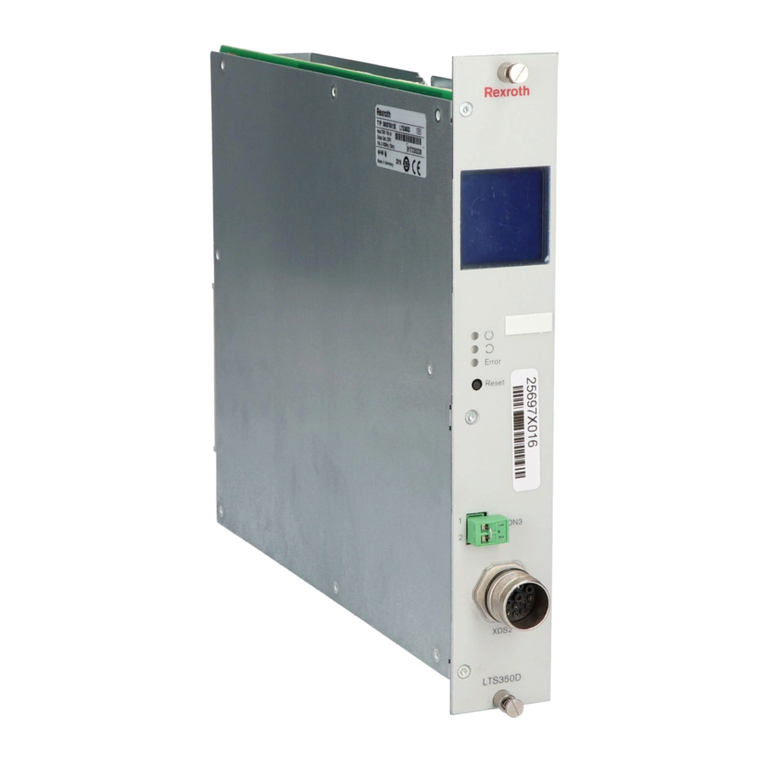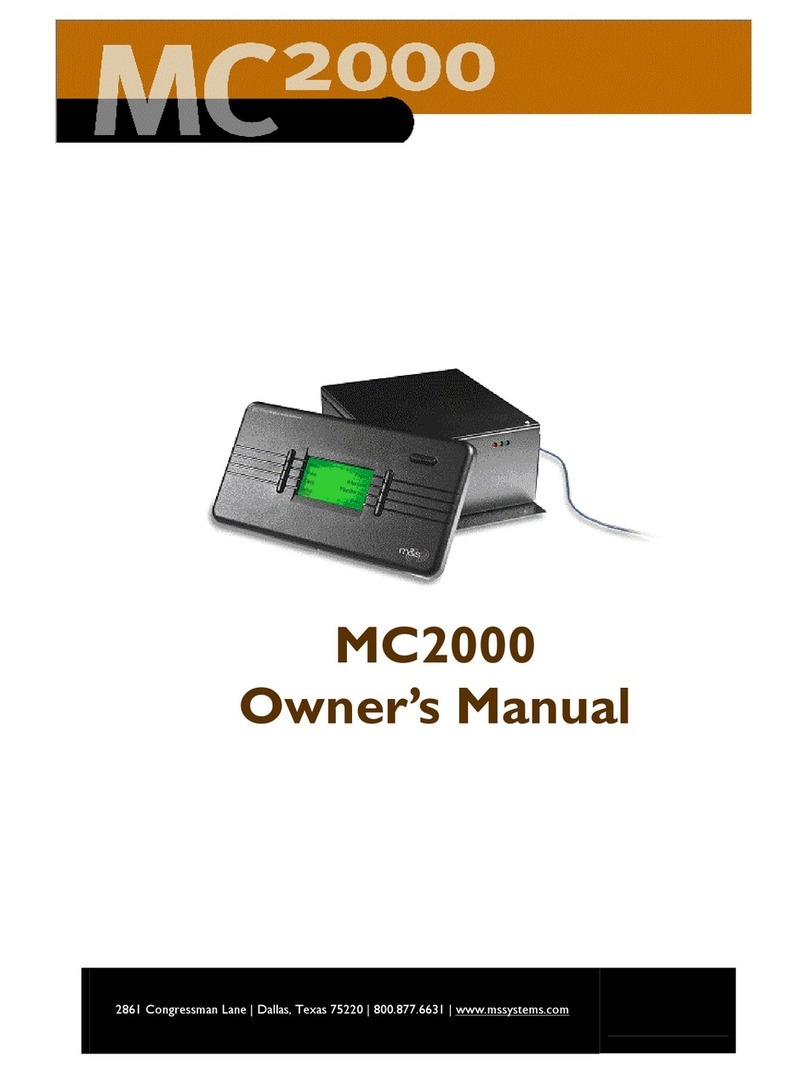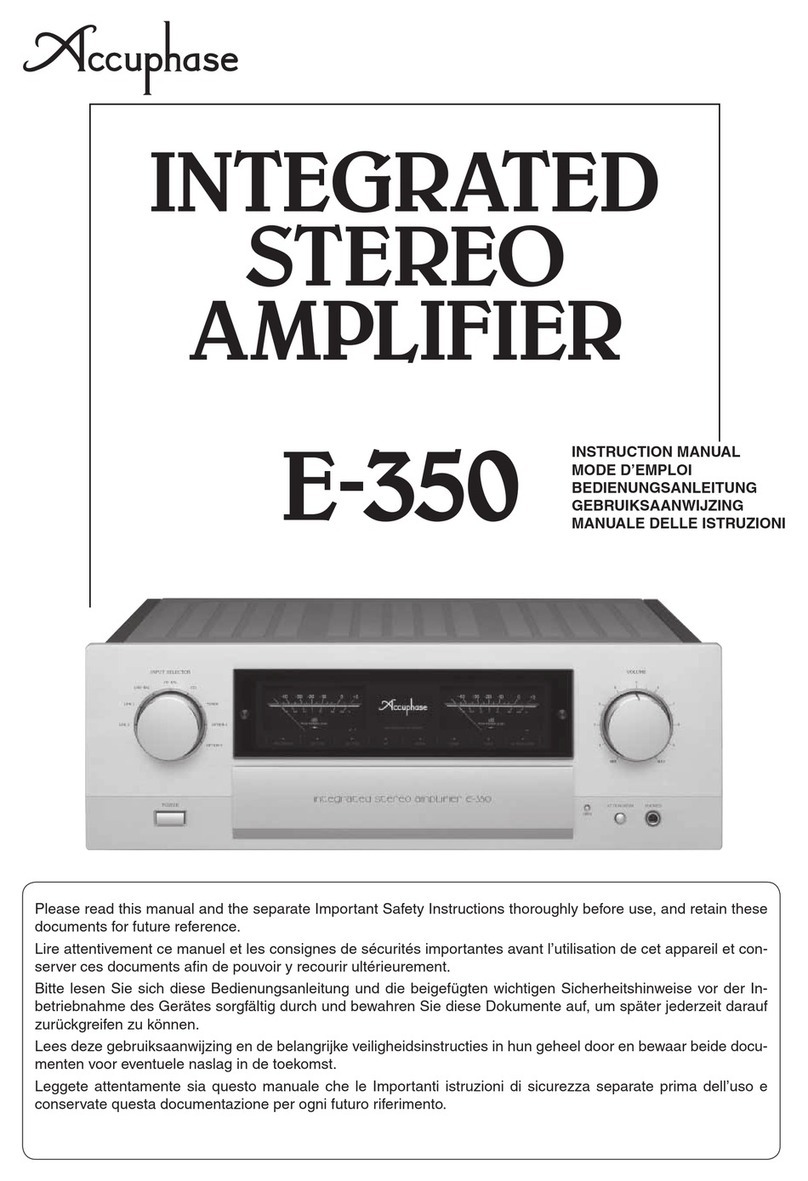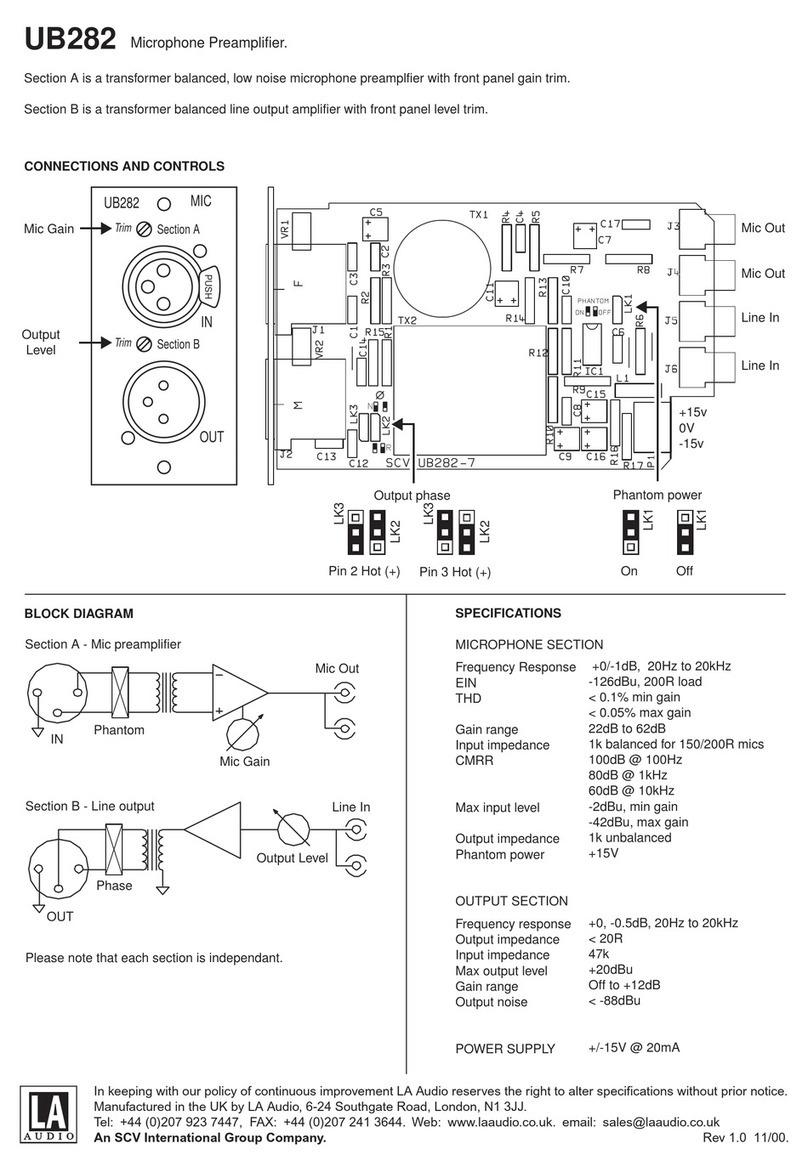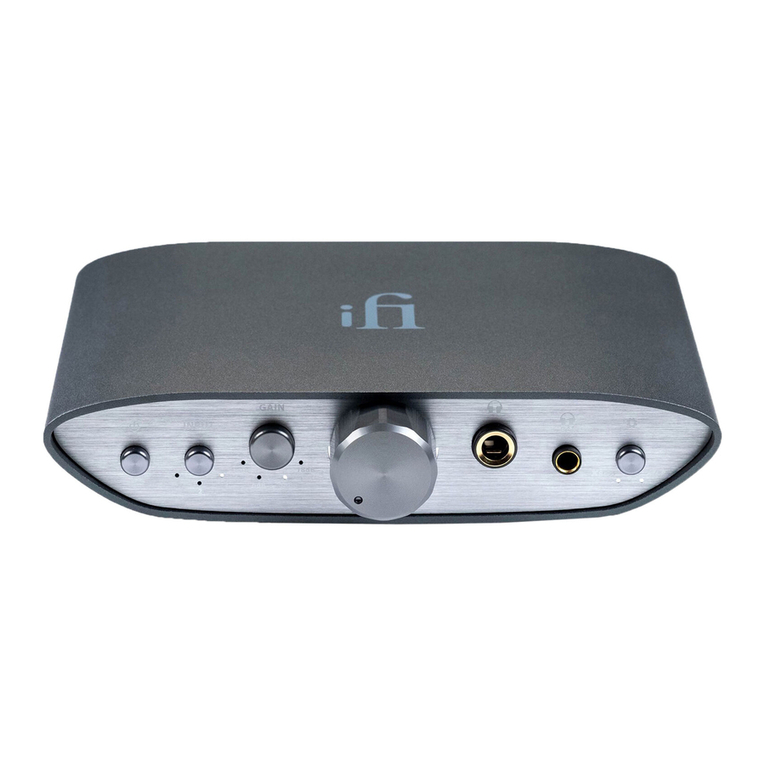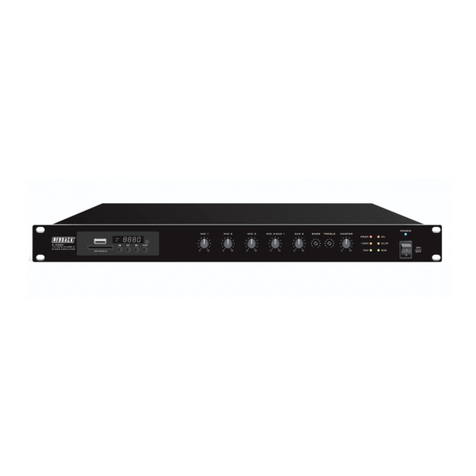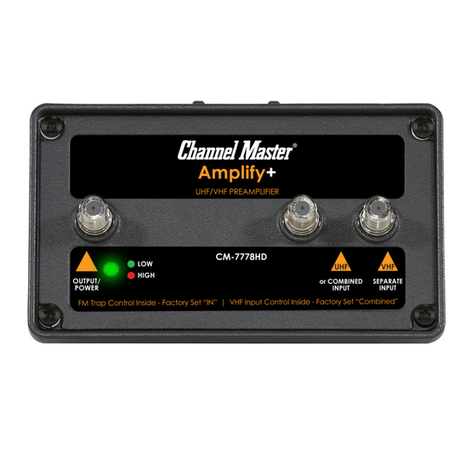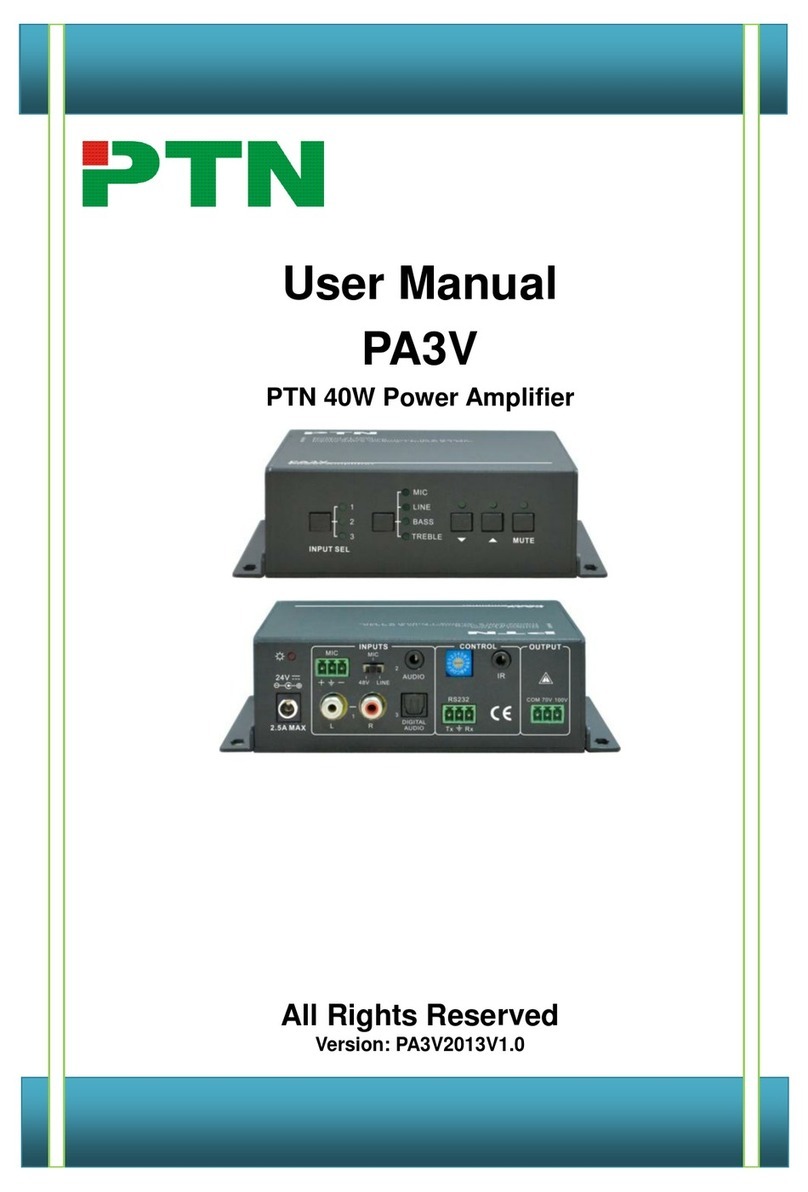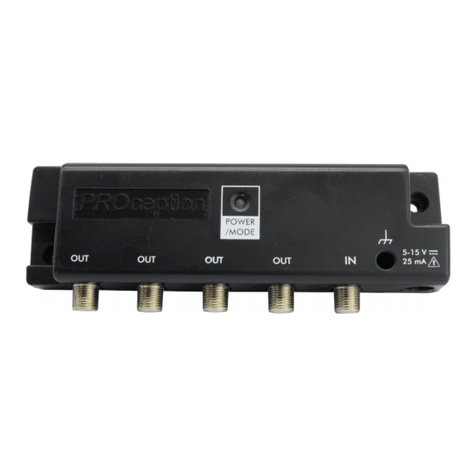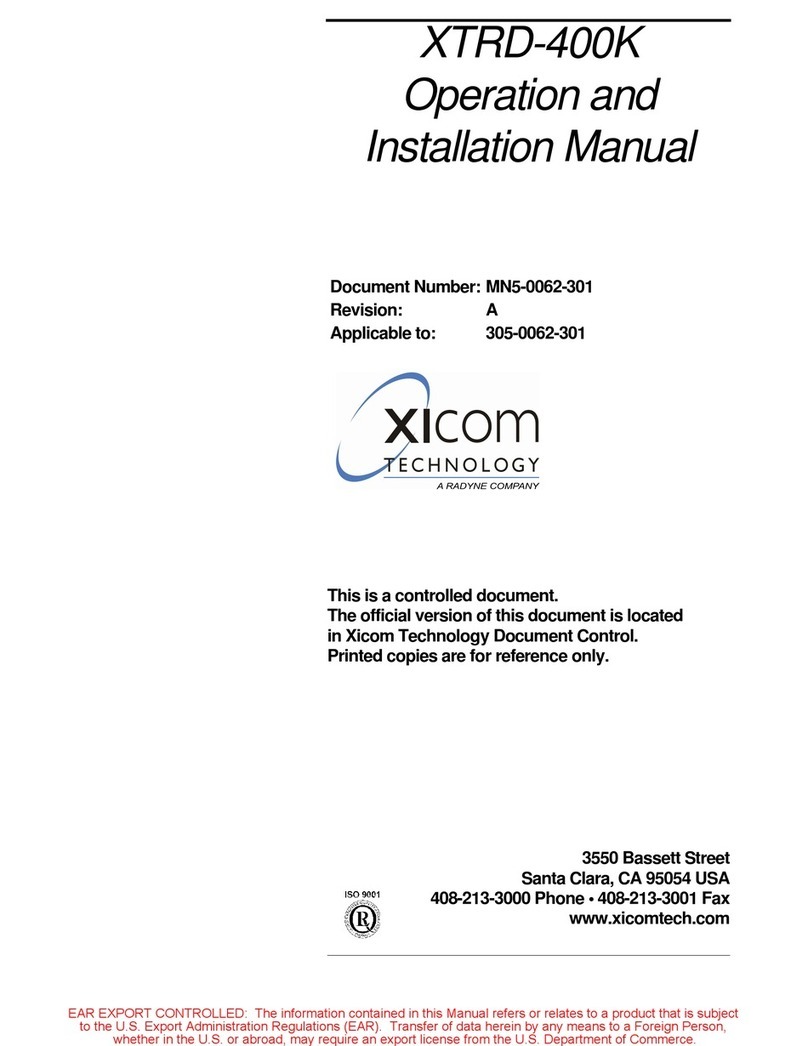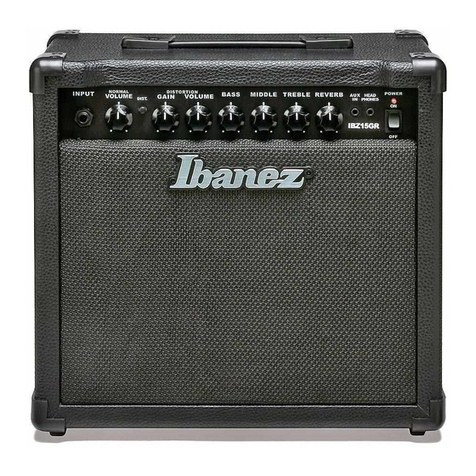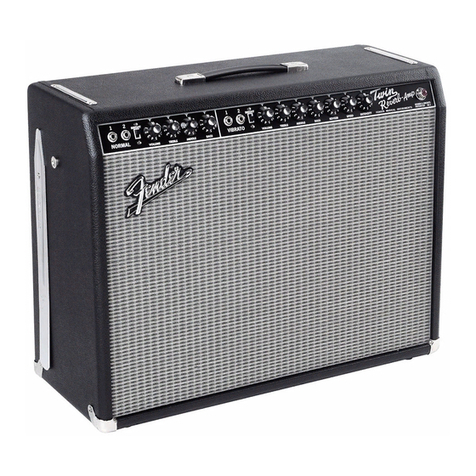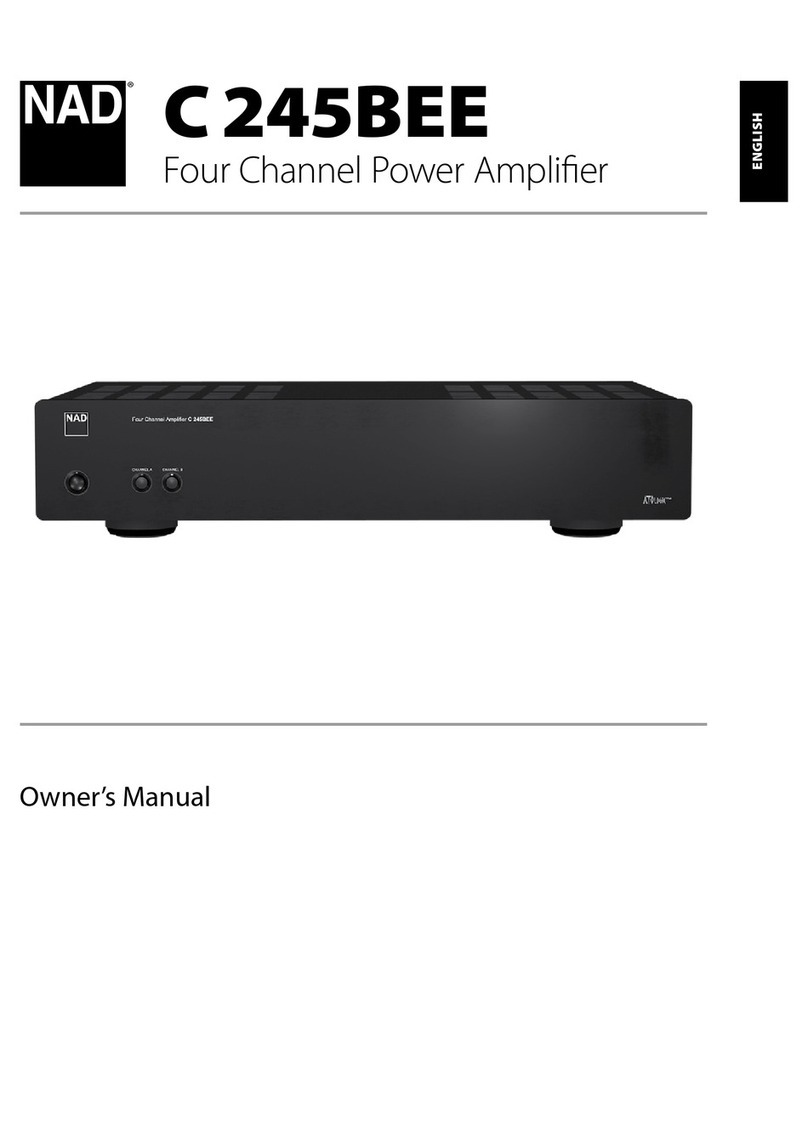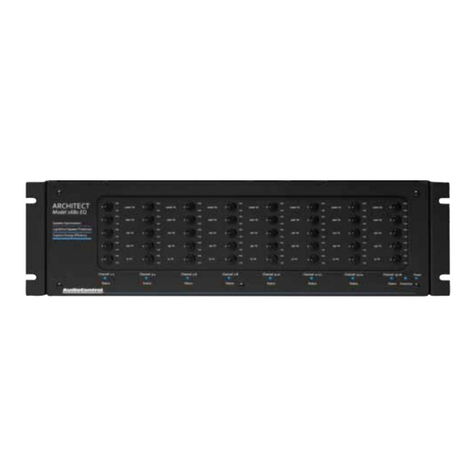THÖRESS F2a11 User manual

THÖRESS
F2a11 Integrated Amplifier
=============================
"F2a11 Integrated"
................................................................
I N S T R U C T I O N M A N U A L
Thank you for purchasing the THÖRESS F2a11 Integrated Amplifier
Our all-tube Integrated utilizes the famous F2a11 vacuum tube in single-ended
triode operation mode for an output power of up to 6 watts into a 4, 8 or 16 ohm
load. Notably, the F2a11 Integrated can also be employed as a stereophonic power
amplifier (in combination with a line or full function preamplifier) in which case the
volume control knobs of the amplifier serve as input attenuators to match the gain
of the line device to the efficiency of the loudspeaker.
The amplifier provides 3 line level inputs (2x3 RCA jacks) of equal gain status
selectable via rotary switch on the rear panel. High-grade continuously variable
potentiometers are employed for separate (manual) volume control of the channels.
The output transformers (OPT) are made in house to the highest possible standards
and allow for precise matching of a 4, 8 or 16 ohm loudspeaker load to the power
tube by way of jumpers soldered to the secondary terminals.
Please read the following explanations and instructions carefully to get the most out
of your F2a11 Integrated Amplifier
TUBES
The power tubes are biased automatically (via voltage drop over a cathode resistor).
An obvious design choice (and very reliable setting of grid bias) in view of the
comparatively low grid bias voltage required for the F2a11 tube (thanks to its high
mutual conductance). The ideal (average) F2a11 tube draws an anode current of
Ia=73mA when it is exposed to an anode voltage of Ua=380V and a control grid bias
voltage of Ug1=(-)16V (in triode operation mode, screen grid connected to the
anode). Representing an excellent quiescent point for single-ended operation which
we have chosen for the F2a11 power tube in our amplifier. Corresponding to an
anode dissipation (Pa=28W=380Vx0.073mA) well below the permissible design
maximum of 35W,

(Ua, Ug1, Ia, Pa) = (380V, (-)16V, 73mA, 28.5W).
Automatic grid bias is applied for the F2a11 power tube. The grid bias voltage cannot be
trimmed to adjust the idle current of the power tube!
Allowing for a tight 7% tolerance in anode current under the given voltage
conditions (380V, (-)16V) , only F2a11 tubes with Ia values in the rage
68mA 73mA-5ma ... 78 mA 73mA+5mA
are suitable for service in the amplifier. It is advisable to use only matched pairs of
F2a11 tubes tested for the above specs supplied by the manufacturer or a reliable
tube supplier. If there is any doubt that a given F2A11 tube fulfills the above
requirements, the actual idle current Ia can be determined (with the aid of Ohms
law) by measuring the voltage drop Uk over the cathode resistor Rk (Rk=220 ohms)
on the living object, Ia=Uk/Rw.
Measurements within the F2a11 amplifier circuitry should be carried out by an
experienced technician only!
A 12SN7GT double-triode is used in the driver stages. The amplifier comes with a
tube which has been carefully tested and hand-picked to meet tight specifications.
The use of a driver tube with questionable characteristics may lead to a degraded sonic
and signal-to-noise performance. Even serious circuit damage may occur in worst case
scenarios!
FUSE
The THÖRESS F2A11 Integrated Power Amplifier draws a current of 0.5 (1.0A) from
the 230Vac (115Vac) mains, corresponding to a power consumption of about 115W.
It is protected with a
1A slow-blowing 5x25mm fuse
in the power inlet. Occasionally, the fuse may blow at the moment the amplifier is
switched on due to the current spike drawn by the mains transformer, especially
when a power cord with very low resistance is used. Should this problem arise more
regularly it is advisable to use a fuse with higher current rating.
LOUDSPEAKER LOAD MATCHING
The F2A11 Integrated Amplifier allows for precise 4, 8 and 16 ohm load matching by
way of jumpers soldered to the secondary terminals of the output transformer (OPT)
according to the patterns indicated below. Each of which pattern corresponds to a
specific (primary versus secondary) turns ratio of the OPT.

Output Transformer Coil
*****************************
1 o o 5
2 o o 6
3 o o 7
4 o o 8
*****************************
o secondary terminal, 1 loudspeaker RED, 8 loudspeaker BLACK
4 ohm loudspeaker
Connect (1 and 2), (3, 4, 5 and 6), (7 and 8).
8 ohm loudspeaker
Connect (2, 3 and 5), (4, 6 and 7) .
16 ohm loudspeaker
Connect (5 and 2), (6 and 3) and (7 and 4).
A single-ended triode amplifier can adequately drive a loudspeaker when the OPT is
configured for a lower load impedance than the rated impedance of the
loudspeaker, especially when the loudspeaker is highly efficient. In this case the
(primary versus secondary) turns ratio of the OPT is higher than the nominal index
value. This reduces the voltage gain but also the harmonic distortion and the output
resistance of the amplifier, at the expense of a somewhat lower maximal power
output.
It can be beneficial to use a 16 ohm loudspeaker with the 8-ohm or even the 4 ohm load
pattern of the OPT, especially when the loudspeaker is highly efficient!
It is possible to use a 8 ohm loudspeaker with the 4-ohm load pattern of the OPT,
especially when the loudspeaker is highly efficient!
On the other hand, a compromised amplifier performance is definitely to be
expected when the OPT is configured for a higher load impedance than the actual
loudspeaker impedance. Thus:
It is not advisable to use a 4 ohm loudspeaker on the 8-ohm or 16 ohm load pattern of
the OPT!
It is not advisable to use a 8 ohm loudspeaker on the 16-ohm load pattern of the OPT!
SETUP
To setup the F2a11 Integrated Amplifier switch off all components of the system and
proceed as follows.

Do not connect the amplifier to the mains until steps 1 to 6 have been taken.
1. Bring the power switch on the power inlet module into the OFF position.
2. Install the tubes carefully. Ascertain that the guide pins of the tube bases are
properly aligned with the notches of the sockets.
Never power on the amplifier until ALL tubes have been installed!
Never pull out a tube while the amplifier is powered on!
Never pull out a tube of the socket as long as it is still hot!
Always de-install the tubes and wrap them in their original protection case before
shipping or transporting the amplifier!
3. Set both volume controls to a very low angle of rotation.
4. Bring the amplifier into its final position. Make sure that there is sufficient
clearance around the tubes to allow for adequate ventilation
5. Connect the amplifier to the loudspeakers. Ascertain that the load matching
installed on the output transformer suits the loudspeaker impedance. Take notice of
the explanations presented in the section LOUDSPEAKER LOAD MATCHING of this
manual.
6. Connect the amplifier to program sources and/or a phono preamplifier.
7. Connect the amplifier to the mains (while leaving the unit powered off).
8. Power on the program sources or/and the phono preamplifier (while the F2a11
Integrated remains powered off). Wait until the warm-up process on these
components has come to an end.
9. Power on the F2a11 Integrated.
10. Wait until the amplifier has warmed up.
Always switch on the program sources first and then switch on the F2a11
Integrated, observing a delay of at least 30 seconds!
Always make sure that the volume controls are in zero position before powering on the
F2a11 Integrated!
Never switch a program source on or off while the F2a11 Integrated is powered on!
11. Activate the desired program source with the input selector and listen to music.
Use the L+R volume control to adjust the listening loudness and the channel
balance.
When powering off the system, always switch off the F2a11 Integrated first, then switch
off the other components of the system observing a delay of at least 30 seconds!
Keep the original crate and the tube protection case for later use. They have been
specifically designed for safe transport under rough conditions! Shipping the amplifier in
inadequate packaging will result in catastrophic damages!
SETUP II

The F2a11 Integrated can be employed as a stereophonic power amplifier (in
combination with a line or full function preamplifier) in which case the volume
controls of the amplifier serve as input attenuators to match the gain of the line
device with the efficiency of the loudspeaker. In order to setup the F2a11 Integrated
as a stereophonic power amplifier power off all components of the system and
procced as follows.
Do not connect the amplifier to the mains until steps 1 to 7 have been taken.
1. Bring the power switch on the power inlet module to the OFF position.
2. Install the tubes carefully. Ascertain that the guide pins of the tube bases are
aligned with the notches of the sockets.
Never power on the amplifier until ALL tubes have been installed!
Never pull out a tube while the amplifier is powered on!
Never pull out a tube of the socket as long as it is still hot!
Always de-install the tubes and wrap them in their original protection case before
shipping or transporting the amplifier!
3. Set both volume controls to a very low angle of rotation.
4. Bring the amplifier into its final position. Make sure that there is sufficient
clearance around the tubes to allow for adequate ventilation.
5. Connect the amplifier to the loudspeakers. Ascertain that the load matching
installed on the OPT suits the loudspeaker impedance. Take notice of the
explanations presented in the section LOUDSPEAKER LOAD MATCHING of this
manual.
6. Choose an arbitrary unassigned input of the F2a11 Amplifier, in the following
denoted by STER for the sake of convenient explanation. Activate STER with the
input selector. Connect STER with with the (line or full function) preamplifier.
7. Turn the volume control on the preamplifier to about the middle position.
8. Connect the F2a11 amplifier to the mains (while leaving the unit powered off).
9. Power on the preamplifier and the program sources (while the F2a11 Integrated
remains powered off). Wait until the warm-up process on all these components has
come to an end. Switch the desired program source active on the preamplifier.
10. Power on the F2a11 Amplifier.
11. Wait until the warm-up process on the unit has come to an end.
Always switch on the preamplifier and the program sources first and then switch on the
F2a11 amplifier, observing a delay of at least 30 seconds!
Never switch the preamplifier or a program source on or off while the F2a11 Amplifier is
powered on!
12. Listen to music with the various program sources. Adjust the L+R volume control
knob on the F2a11 Amplifier for convenient loudness in average (while the volume
control on the preamplifier rests in about the middle position) and correct channel
balance. After this adjustment the attenuated gain of the F2a11 amplifier matches

the gain of the line section with respect to the efficiency of the loudspeaker.
13. Let the volume controls of the F2a11 Amplifier rest in the positions determined
in step 14 and from now on use the volume control knob on the preamplifier for
loudness control as long as input STER is switched active.
When powering off the system, always switch off the F2a11 amplifier first, then switch
off the other components of the setup, observing a delay of at least 30 seconds!
Keep the original crate and the tube protection case for later use. They have been
specifically designed for safe transport under rough conditions! Shipping the amplifier in
inadequate packaging will result in catastrophic damages of the unit!
F E A T U R E O V E R V I E
•All-Tube Integrated Amplifier with 6 watts of output power per channel.
•Minimalist zero-feedback schematic utilizing NOS F2a11 power tubes in single-
ended triode mode and a 12SN7GT double-triode in the driver stages.
•3 inputs (RCA jacks) selectable via rotary dial located on the rear panel.
•Manual volume control via and independently adjustable pair of proprietary
high-grade rotary potentiometers with low angle sensitivity (conveniently fine
volume adjustment).
•Ultimate C-Core output transformers produced in-house. Precise 4, 8, and 16
ohm loudspeaker load matching via jumper settings on the secondary terminals.
•High-grade electrolytic capacitors made in Germany in the power supply.
•Ultra low noise mains transformer made in-house for 230Vac (115Vac via jumper
setting), 100Vac (Japan), 220Vac (South-Korea, China, Thailand, Indonesia) or
245Vac (Australia).
•Full hand construction, point-to-point wiring throughout.
•Nonmagnetic aluminum casework, anodized printing on front and rear panel,
powder-coated chassis and lids.
•Dimensions: 150x595xH330 mm,
330=20 (case feet) +210+100 (power tube over case),
595=575+20 (speaker binding posts), weight 18 Kg.
•Dimensions of the shipping crate 400x950xH460 mm.
................................................................
THÖRESS...
A Tribute to Professional Audio Components
from the Golden Age of the Electronic Tube !
................................................................
Table of contents
Other THÖRESS Amplifier manuals
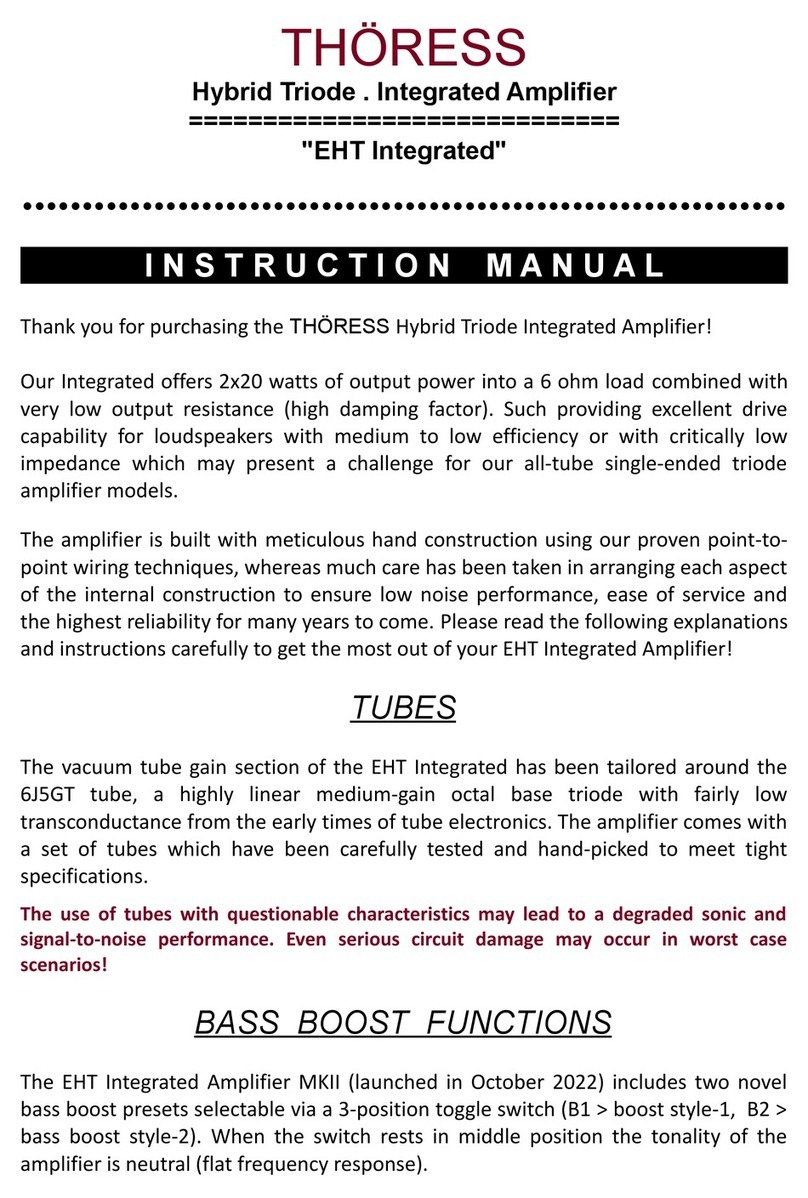
THÖRESS
THÖRESS EHT Integrated Amplifier MKII User manual
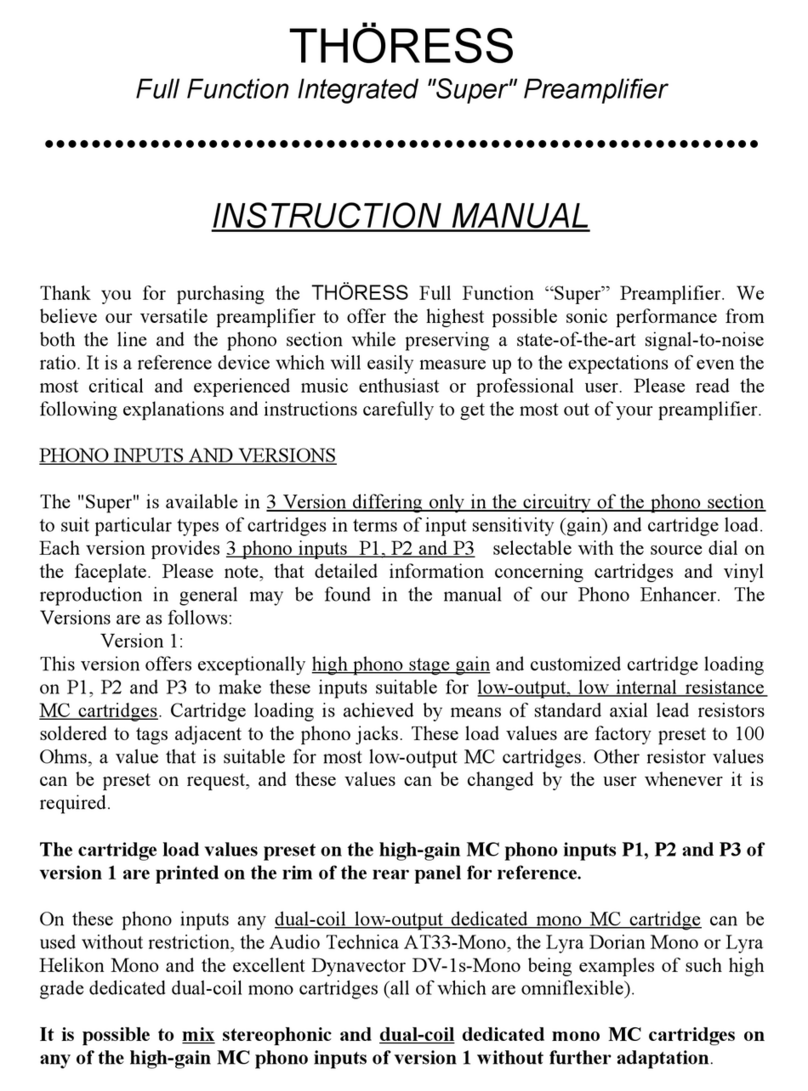
THÖRESS
THÖRESS Full Function Integrated "Super"... User manual
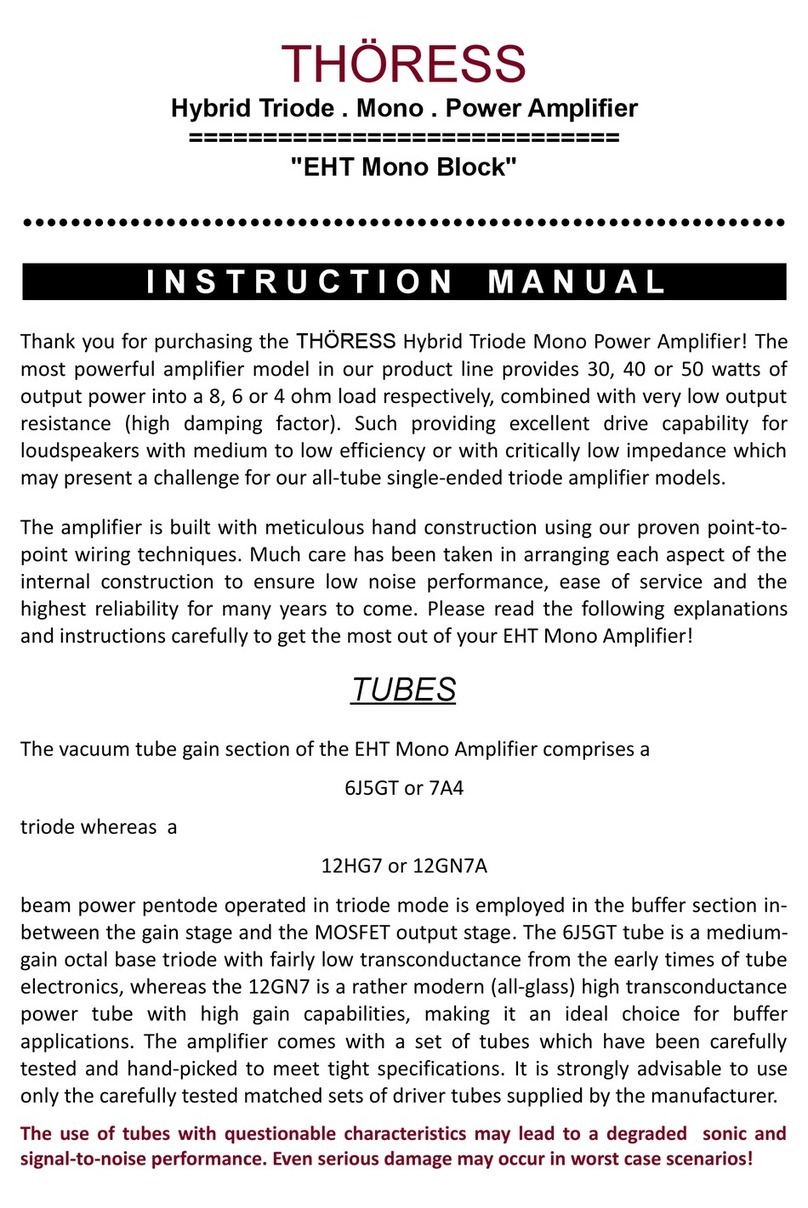
THÖRESS
THÖRESS EHT Mono Block User manual

THÖRESS
THÖRESS 300B User manual
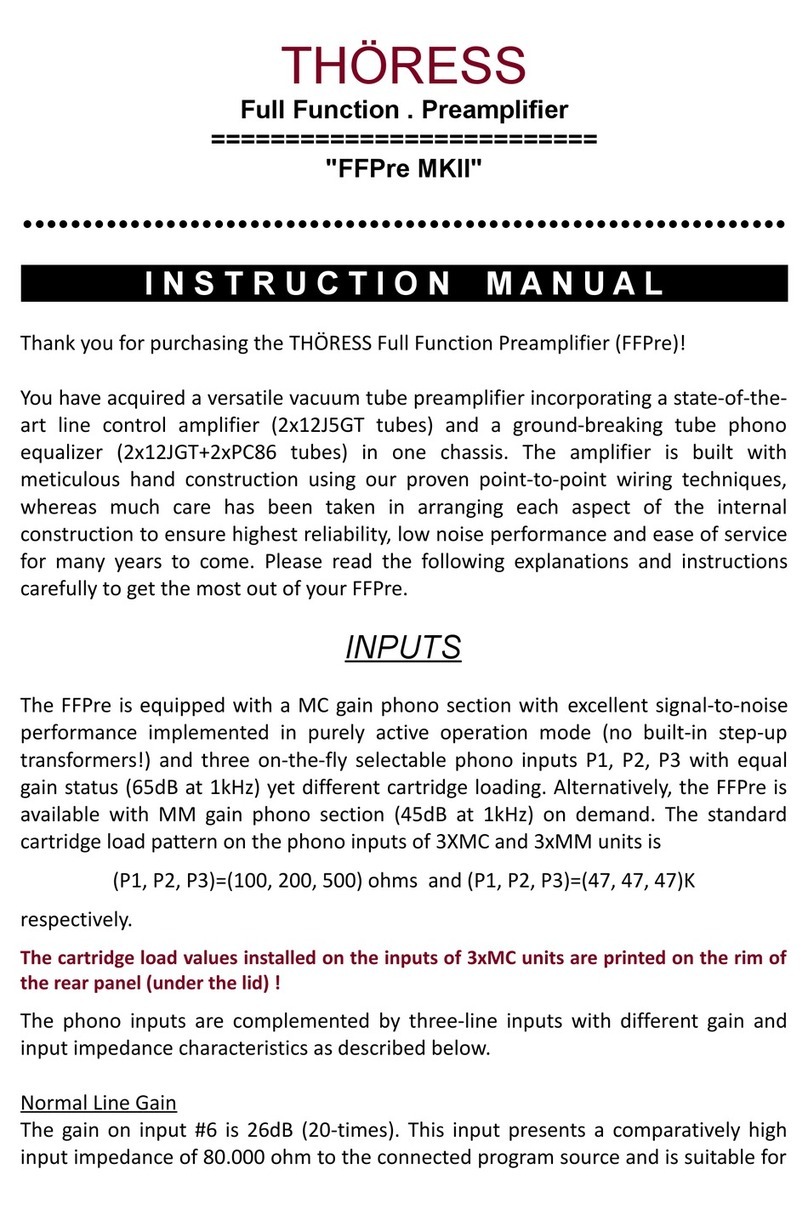
THÖRESS
THÖRESS FFPre MKII User manual

THÖRESS
THÖRESS SE300B User manual

THÖRESS
THÖRESS Parametric Phono Equalizer Series User manual

THÖRESS
THÖRESS SE845 Mono User manual
